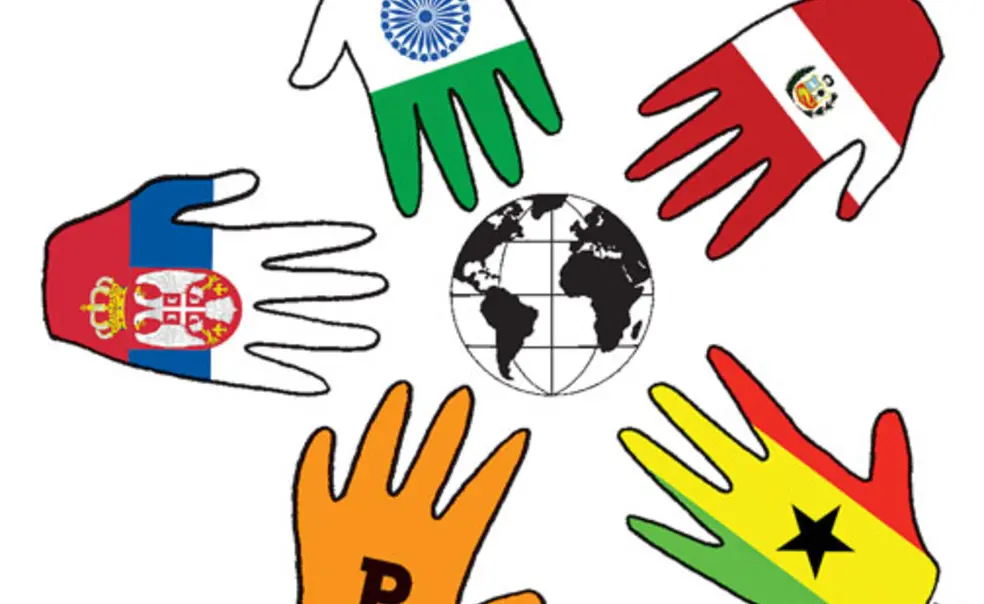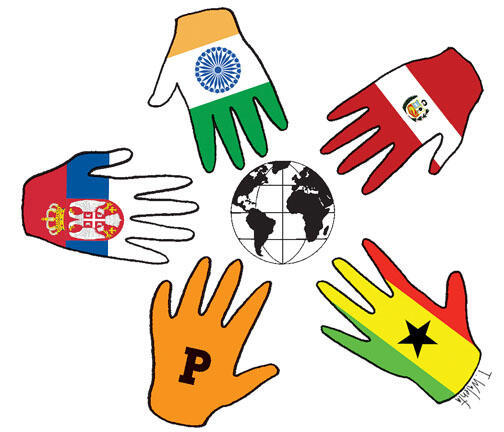Launching the gap year; facing fears of swine flu
Elizabeth Martin ’14 (briefly ’13) is packing. Sheets and pillowcases will not fill her duffle; a sleeping bag and mat will. Her plane ticket does not list New Jersey — instead, it reads India.
Martin is one of 20 students selected from 54 applicants for Princeton’s inaugural bridge-year program. The program offers future students an unorthodox beginning to their Princeton career: a gap year working on community-service projects in India, Serbia, Ghana, or Peru.
There will be no dorm rooms to decorate this fall; rather, the students will be acquiring host families, living in home-stays. They will take language classes, but all other lessons will take place on farms, fields, and city streets.
In past summers, Cole Freeman ’14 weeded community gardens and taught kids to sail. Over the next nine months Freeman and his peers will expand their scope: assisting in teen street shelters, developing microcredit programs for rural farmers, and organizing health campaigns. Except for visiting Canada, Freeman never has left the United States. This fall he flies to Accra, Ghana.
Princeton’s gap year is unique among colleges, with the University coordinating with three program partners — World Learning, ProWorld Service Corps, and Where There Be Dragons — and paying for most expenses aside from airfare.
When Chhaya Werner ’14 tore open her Princeton acceptance letter, she had no intention of postponing her arrival on campus. Yet she kept coming back to the bridge-year offer. “At first I wasn’t sure I was brave enough,” she said, “but I realized that I don’t have to be brave enough to do everything we’ll do right now, I just have to be brave enough to sign up and then I can take each step as it comes.” An entire month was necessary for Tugce Tunalilar ’14, the program’s sole international student, from Turkey, to convince her parents that she should start her college career this fall not in Princeton, but Peru.
Werner, who will be exploring the dusty streets of Varanasi, India, has one key concern. Part Indian herself, she has yet to learn Hindi. “If you’re white, locals are impressed if you can speak five words of Hindi,” she said. “They’ll expect me to be fluent.” But Werner has plans to prove her American upbringing: She is packing a cowboy hat.
By Nikki Leon ’11
When Shuo Li ’10 was quarantined in a Beijing hospital in May, he learned his diagnosis not from doctors but from the Internet. According to the Chinese government’s Web site, Beijing officials had confirmed the city’s seventh case of Influenza A H1N1: a 23-year-old Chinese national from Princeton University with the surname Li.
Whether summering in Boston or Bangkok, few Princeton students could evade fears of swine flu. Though reported cases of H1N1 among Princetonians were sparse, many underwent weeklong quarantines or witnessed government shutdowns of public venues.
“You just have to ... be able to roll with the punches,” said Emily Nguyen ’11, who scrambled to find a job in Lima, Peru, after health authorities closed the local school where she had been volunteering.
Nguyen wasn’t the only student facing unexpected challenges. When Qin Zhi Lau ’11 exhibited flulike symptoms while working as a camp counselor in Pennsylvania, his employer quarantined him in an empty dormitory (the camp’s policy was not to test for swine flu). Mike Mensah ’10 elected to go to Spain when his plans to study Spanish in Mexico “suddenly didn’t make sense” in light of the pandemic.
For students from the United States, which reported the most cases of H1N1 this summer, the pandemic provoked an added degree of self-consciousness abroad. “We were the vector of the disease,” said Shannon Togawa Mercer ’11, whose entire dormitory at the American University in Cairo was quarantined when seven residents tested positive for swine flu.
Students from China were less fazed. “We had avian flu and now swine flu and maybe next, cow flu,” quipped Hong Kong native Ting Bok ’11, who witnessed the 2003 SARS outbreak in her home city.
Li said that had he not fallen ill, he still would have stayed inside his house in Beijing for a week upon arriving home — a health precaution urged by local authorities. “Overreaction is actually better than no reaction,” said Li, though he stopped wearing a face mask after his release. “After I get out, I don’t need to wear it, right? I was the safest person.”












1 Response
Kate Mattingly ’93
9 Years AgoProud of bridge year
While visiting a festival of contemporary performance last week in Serbia I was surprised to notice a group of young people, about college age, with one of the women wearing a Princeton sweatshirt. As a graduate of Princeton, I had to ask if she had an affiliation with the University. To my delight, she not only was enrolled at Princeton, but she and her friends will enter as freshmen once they complete their volunteer projects in Serbia as part of the bridge-year program (On the Campus, Sept. 23).
At a time when many people are forced to cut back on expenses and projects, given our economic climate, it was truly inspiring to see that Princeton has not relinquished its commitment to service. The volunteer work that the students are pursuing in Serbia ranges from youth projects to HIV/AIDS education programs. They spoke with passion about the experience of traveling abroad and working within different communities.
I was attending a festival that presented new works by young artists from the Balkan region. Their creations revealed the possibilities of art and theater to comment on and instigate social change. I was part of a group attending to observe artistic trends and to see if there are possibilities for cultural exchanges. In both groups of young people — the artists as well as the Princeton students — I noticed a similar vibrancy and commitment to thought and action that can inspire creativity and community development.
Although I loved my years as a student, I am even more proud of the University when I see its ongoing commitment not only to our next generation, but also to cultural endeavors. The more complicated and intertwined our world becomes, the greater the significance of each of our interactions with people and ideas from other places.